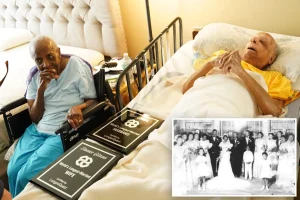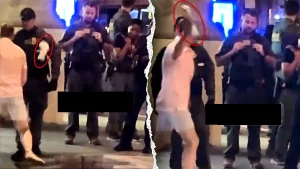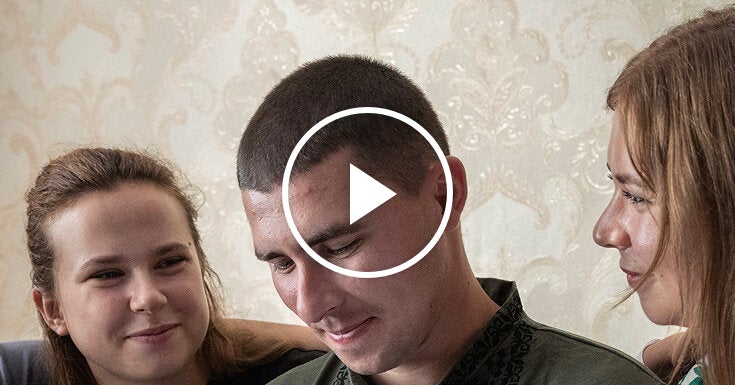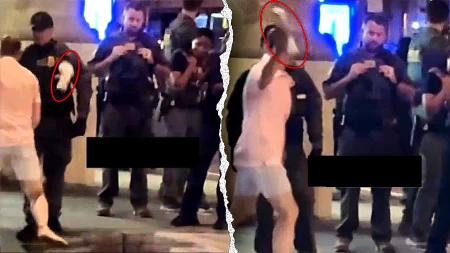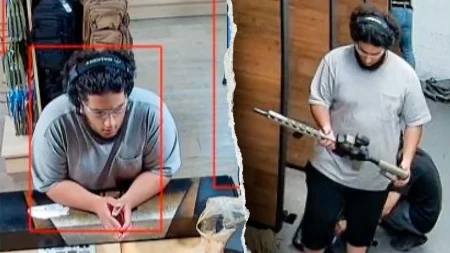From Captivity to Freedom: How War in Ukraine Has Shaped a Generation
A Young Ukrainian’s Journey Through the Crucible of Modern Conflict
The late afternoon sun casts long shadows across the rehabilitation center on Kyiv’s outskirts as Serhiy Hrebinyk adjusts to his newfound freedom. At just 25 years old, the former prisoner of war bears the weathered expression of someone who has witnessed far more than most people twice his age. Three weeks after his release from a Russian detention facility, Hrebinyk speaks with measured words, occasionally pausing to collect his thoughts—a habit formed during months of interrogations where a wrong word could mean severe punishment.
“You learn to think before you speak,” he explains, rubbing the still-visible marks on his wrists from prolonged restraint. “In captivity, survival depends on it.”
Hrebinyk represents an entire generation of Ukrainian men whose lives have been fundamentally transformed by what has become the bloodiest conflict on European soil since World War II. His story—one of courage, resilience, and trauma—mirrors the broader national experience as Ukraine approaches the third year of full-scale war with Russia.
The Generation Forged in Fire: Ukraine’s Young Men at War
The Russian invasion that began in February 2022 has created a defining generational experience for Ukrainian men in their twenties and thirties. Young professionals who once worried about career advancement and dating now discuss artillery ranges and battlefield tactics with the familiarity of seasoned military analysts. University students have swapped textbooks for rifles, and farmers have traded tractors for tanks.
For Hrebinyk, who was studying computer engineering in Kharkiv when the full-scale invasion began, the transformation was especially abrupt. “I was debugging code one day, and the next, I was learning how to operate a drone,” he recalls. Within weeks of the invasion, he joined a territorial defense unit, eventually transferring to a mechanized brigade deployed to the eastern front.
His path from civilian to soldier to prisoner reflects a journey thousands of his peers have taken. Military officials estimate that over 500,000 Ukrainians have served in combat roles since 2022, with men under 35 forming the backbone of the fighting force. This war-forged generation will eventually shape Ukraine’s future—if they survive to see it.
“We didn’t choose this life,” says Oleksandr Kovalchuk, 29, a former IT specialist who served alongside Hrebinyk before being wounded in a drone attack last year. “But we’ve accepted that our generation’s task is to ensure Ukraine exists for the next one.”
Capture and Confinement: Inside Russian Detention
Hrebinyk’s capture came during the chaotic fighting near Bakhmut in April 2023. After his unit’s position was overwhelmed following days of heavy artillery bombardment, he and seven comrades were taken prisoner while attempting to withdraw to secondary defensive lines.
“The first weeks were the worst,” Hrebinyk says, describing a systematic process of intimidation, occasional physical abuse, and psychological pressure. “They wanted information, but they also wanted to break you as a person—to make you believe Ukraine had forgotten you.”
The conditions in detention facilities varied widely, according to released prisoners. Some report relatively humane treatment while others describe torture and severe mistreatment. Hrebinyk experienced both extremes during his ten months in captivity, having been transferred between three different facilities.
International humanitarian organizations have documented widespread violations of the Geneva Conventions regarding treatment of prisoners of war on both sides, though with significantly more reported cases involving Russian detention of Ukrainian prisoners. The International Committee of the Red Cross has gained only sporadic access to detention facilities, making comprehensive monitoring impossible.
“The uncertainty is what wears you down,” Hrebinyk explains. “You don’t know if you’ll be exchanged tomorrow or held for years. You don’t know if your family knows you’re alive. You exist in this limbo where the future disappears.”
The Homecoming: Reintegration and Recovery
The prisoner exchange that freed Hrebinyk and 75 other Ukrainian captives in February 2024 was negotiated through intermediaries from the United Arab Emirates—one of several such exchanges that have returned over 3,000 Ukrainians from Russian captivity since the war began. For many, including Hrebinyk, freedom brought its own challenges.
“I couldn’t sleep in a bed for the first week,” he admits with a slight smile that doesn’t reach his eyes. “I had gotten used to concrete floors. Comfort felt suspicious.”
At the rehabilitation center outside Kyiv, former prisoners receive comprehensive care addressing both physical and psychological trauma. Dr. Natalia Berzhynska, who oversees the psychological rehabilitation program, notes that returning POWs often struggle with a complex web of issues including survivor’s guilt, post-traumatic stress, and difficulties reconnecting with loved ones.
“They return to a country that has continued evolving while they were frozen in time,” Berzhynska explains. “Their families have adapted to their absence, the frontlines have shifted, and they must rebuild their identity beyond being simply ‘captive’ or ‘soldier.'”
For Hrebinyk, this process includes reconnecting with family and deciding what role he can play in a war that continues to rage. After mandatory rehabilitation, he faces a choice: return to military service, pursue a medical discharge, or find another way to contribute to Ukraine’s defense.
“I’m not the same person who was captured,” he reflects. “I need to understand who this new version of me is before I decide what comes next.”
A Nation Transformed: The War’s Broader Impact
The individual stories of soldiers like Hrebinyk reflect Ukraine’s larger national transformation. A country that many international observers initially expected to fall within days has sustained a defense effort for over two years, developing institutional resilience alongside individual courage.
The human cost has been staggering. While official casualty figures remain classified, Western intelligence estimates suggest tens of thousands of Ukrainian military personnel have been killed or wounded. Nearly every community has lost sons, daughters, fathers, and mothers. The demographic impact will reshape Ukrainian society for generations.
“This is a nation being reforged through sacrifice,” says Dr. Olena Makarenko, a sociologist at Kyiv-Mohyla Academy who studies war’s social impact. “We’re seeing the formation of a civic identity defined not by language or ethnicity but by shared commitment to Ukraine’s sovereignty and democratic future.”
That commitment crosses previously significant regional and linguistic divides. Hrebinyk, who grew up speaking Russian in eastern Ukraine, now primarily uses Ukrainian—a personal choice reflecting broader societal shifts. Many of his former comrades come from regions and backgrounds that political scientists once considered divided.
“In the trenches, nobody asks if you’re from Lviv or Luhansk,” Hrebinyk notes. “The old divisions seem trivial now.”
Looking Forward: Uncertain Futures in a Continuing War
As rehabilitation progresses, Hrebinyk has begun contemplating his future—something that seemed impossible during captivity. His immediate goals are modest: regain weight lost during imprisonment, help fellow veterans navigate reintegration challenges, and eventually visit the grave of his closest friend who died in the fighting near Kharkiv.
“Long-term plans feel like a luxury,” he admits. “But I’m starting to believe in ‘after’ again.”
This tentative hope mirrors Ukraine’s national situation. With the war in its third year and no clear path to resolution, the country balances between immediate survival needs and longer-term reconstruction vision. Western support remains crucial but uncertain, while Russia shows no signs of abandoning its territorial ambitions.
For the generation of young Ukrainians like Hrebinyk, the war has compressed lifetimes of experience into months. They have witnessed extraordinary courage alongside terrible cruelty, developed profound bonds with comrades while losing many of them, and discovered capabilities they never knew they possessed.
“We didn’t ask for this education,” Hrebinyk says, gazing toward Kyiv’s skyline visible from the rehabilitation center’s garden. “But we’ve learned lessons about freedom, about its cost and its value, that most people never have to learn.”
As he prepares to leave the rehabilitation center in the coming weeks, Hrebinyk represents both the heavy burden this generation carries and the remarkable strength they’ve developed to bear it. Their stories—of capture and release, of trauma and healing, of loss and perseverance—will ultimately form the foundation of whatever Ukraine becomes when the guns finally fall silent.
“This isn’t just my story,” Hrebinyk insists as our conversation concludes. “It belongs to all of us who have lived through this moment in history. And we’re still writing it.”
